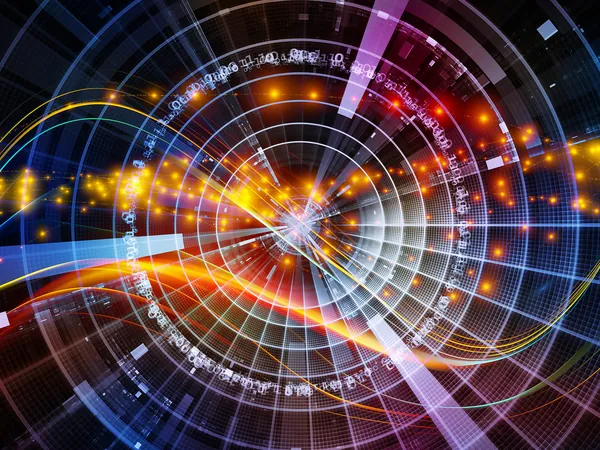
Revolutionizing Physics: How Quantum Internet Could Bridge Einstein's Theories
2025-07-23
Author: Ken Lee
For over a century, scientists have navigated the complexities of physics using two distinct frameworks: quantum mechanics and general relativity. While quantum mechanics unravels the mysteries of atoms and photons in the microscopic world, Einstein's general relativity explains the grand dance of planets and stars within the fabric of space-time. Despite their individual successes, these two theories have yet to find common ground in a unified equation.
A Dream Reshaped: Quantum Clocks on a Mountain
Now, a groundbreaking proposal suggests an innovative way to bridge this gap. Imagine placing a trio of ultrafine atomic clocks on a mountainside, linked through the same quantum technology that aims to support a future quantum internet. This ambitious plan comes from Igor Pikovski from Stevens Institute of Technology, Jacob Covey from the University of Illinois, and Johannes Borregaard from Harvard University.
Their recent paper, titled "Probing Curved Spacetime with a Distributed Atomic Processor Clock," published in PRX Quantum, outlines this captivating experiment designed to measure the effects of gravity on quantum states.
Harnessing Gravity to Unravel Quantum Mysteries
Pikovski describes the synergy between quantum theory and gravity as one of today's most intriguing challenges in physics. By positioning the atomic clocks at different elevations, this experiment aims to observe how quantum superpositions can traverse Earth's curved space-time, offering fresh insights into the coexistence of these two monumental theories.
Atomic Clocks: The Keys to Timekeeping
Already integral to modern technologies like GPS, atomic clocks have an astonishing accuracy, maintaining time with a discrepancy of only a second every billion years. Their workings rely on the absorption and emission of light by atoms such as ytterbium-171. In this new venture, these clocks will operate at significant height differences: the top clock will tick slightly faster than its counterpart at the base due to gravitational time dilation.
Quantum Teleportation: A Game Changer in Physics
What sets this experiment apart is the use of quantum devices that can exist in superposition—an exciting state where they can effectively tick from multiple positions simultaneously. Previous confirmations of gravitational time dilation used classical methods; this technique stands to dramatically reduce uncertainty and increase precision.
Entanglement plays a crucial role here, allowing the three clocks to function as one cohesive unit. This system means that if one clock faces an issue, the state is preserved, a vital feature for quantum communication. Utilizing this entangled state, scientists can teleport information about time, eliminating the need for transporting hardware repetitively up and down the mountain.
Decoding Quantum Beats
As the entangled clocks tick away, they will each accumulate a slightly different phase due to discrepancies in the local flow of time. By bringing these phases together through quantum teleportation, researchers should observe unique interference patterns that encode altitude differences and the effects of quantum superposition. If either theory fails to hold true at this intersection of ideas, the outcomes will definitely surprise us.
Future Implications: Quantum Internet and Beyond
This research not only promises to clarify our understanding of time and gravity but also contributes significantly to the impending quantum internet. The very technologies developed to facilitate the experiment—like entangled states and teleportation—are precisely what will empower secure, city-sized quantum networks.
Looking ahead, organizations are already utilizing elevated structures like towers for upcoming intercity quantum links. By incorporating fundamental tests into these networks, what was once routine maintenance could evolve into a new frontier for precision geodesy.
Engineering Challenges Ahead
While constructing this sophisticated network poses engineering challenges—from ensuring effective entanglement to keeping temperatures at near absolute zero—these are all surmountable hurdles within the capabilities of today’s technology.
If the experiment validates the predictions of both theories, it will bring us closer to a unified understanding of our universe. But if discrepancies arise, a thrilling adventure into the unknown will unfold, potentially revealing how quantum mechanics and gravity intricately influence one another.
Ultimately, whether it's an affirmation or an unexpected twist, this groundbreaking experiment could redefine our approach to physics, laying the groundwork for even more ambitious space-based missions in the future. After all, the quest for knowledge is never limited to Earth’s mountains alone.


 Brasil (PT)
Brasil (PT)
 Canada (EN)
Canada (EN)
 Chile (ES)
Chile (ES)
 Česko (CS)
Česko (CS)
 대한민국 (KO)
대한민국 (KO)
 España (ES)
España (ES)
 France (FR)
France (FR)
 Hong Kong (EN)
Hong Kong (EN)
 Italia (IT)
Italia (IT)
 日本 (JA)
日本 (JA)
 Magyarország (HU)
Magyarország (HU)
 Norge (NO)
Norge (NO)
 Polska (PL)
Polska (PL)
 Schweiz (DE)
Schweiz (DE)
 Singapore (EN)
Singapore (EN)
 Sverige (SV)
Sverige (SV)
 Suomi (FI)
Suomi (FI)
 Türkiye (TR)
Türkiye (TR)
 الإمارات العربية المتحدة (AR)
الإمارات العربية المتحدة (AR)